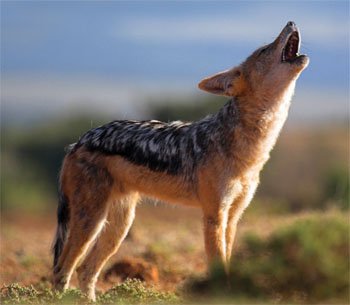Jackal
Photo by Chris Stenger on Unsplash
Design

Many jackals live in family units, with the older siblings living and helping with the younger pups. This helps protect the family. A female jackal will change its home every two weeks to protect her young from predators. This instinct became part of her behavior after the Fall when animals began hunting other animals.
Features
- Two species of jackals are tan-colored while the black-backed has black hair on its back against its reddish body. Most jackals have black-tipped tails as well.
Fun Facts
- Jackals use their tails to communicate to others. Jackals are also very noisy; they howl and yelp.
- The black-backed jackal gives birth to her young underground in an empty burrow.
- A single 20-lb (9-kg) jackal will drive off an 80-lb (36-kg) hyena.
- Jackals help keep the numbers of vermin down, such as rodents and insects, which eat crops.
Created Kind Members
Coyote, wolf, dingo, fox, domesticated dog
CLASS: Mammalia (mammal)
ORDER: Carnivora (meat-eating)
FAMILY: Canidae (dog kind)
GENUS/SPECIES: Canis aureus, C. adustus, and C. mesomelas (golden, side-striped, and black-backed jackal)
Size: 15–20 in (0.4–0.5 m) tall
Weight: 15–35 lbs (6.8–15.9 kg)
Original Diet: Plants
Present Diet: Both plants and animals; known also as a scavenger
Habitat: Grasslands, woodlands, and deserts of Africa; one species from Arabia to India
Zoo Guide
Make your next visit to the zoo more than just fun—make it factual and fascinating too! You could even start a personal “creation zoo tours” ministry. Featuring more than 100 animals, our long-awaited Zoo Guide includes beautiful pictures and explores the amazing facts and design features that point to our awesome Creator. Excellent gift for any one who loves animals!
Browse Kids Book- © 2025 Answers in Genesis
- Privacy Policy
- Contact
- About

